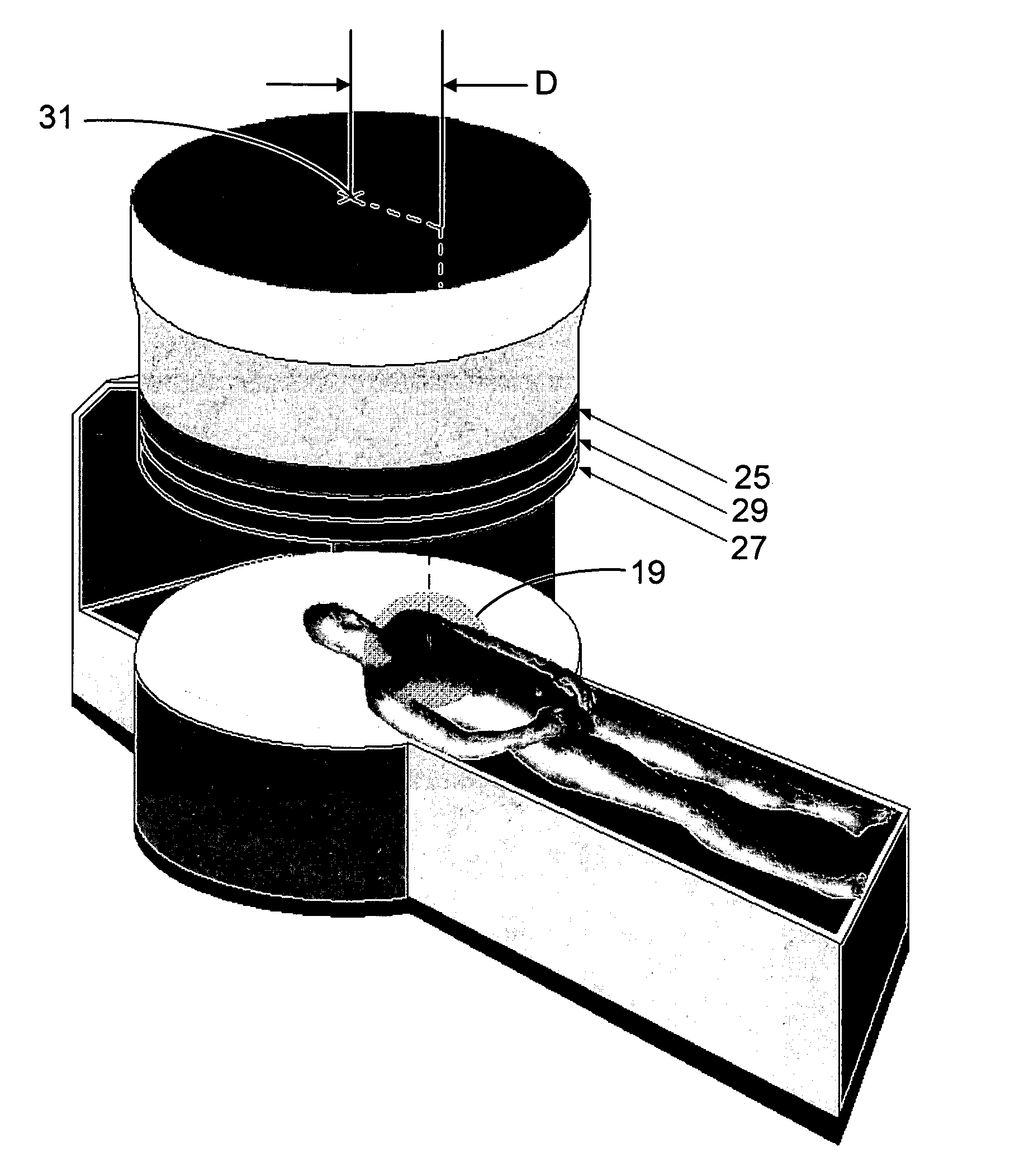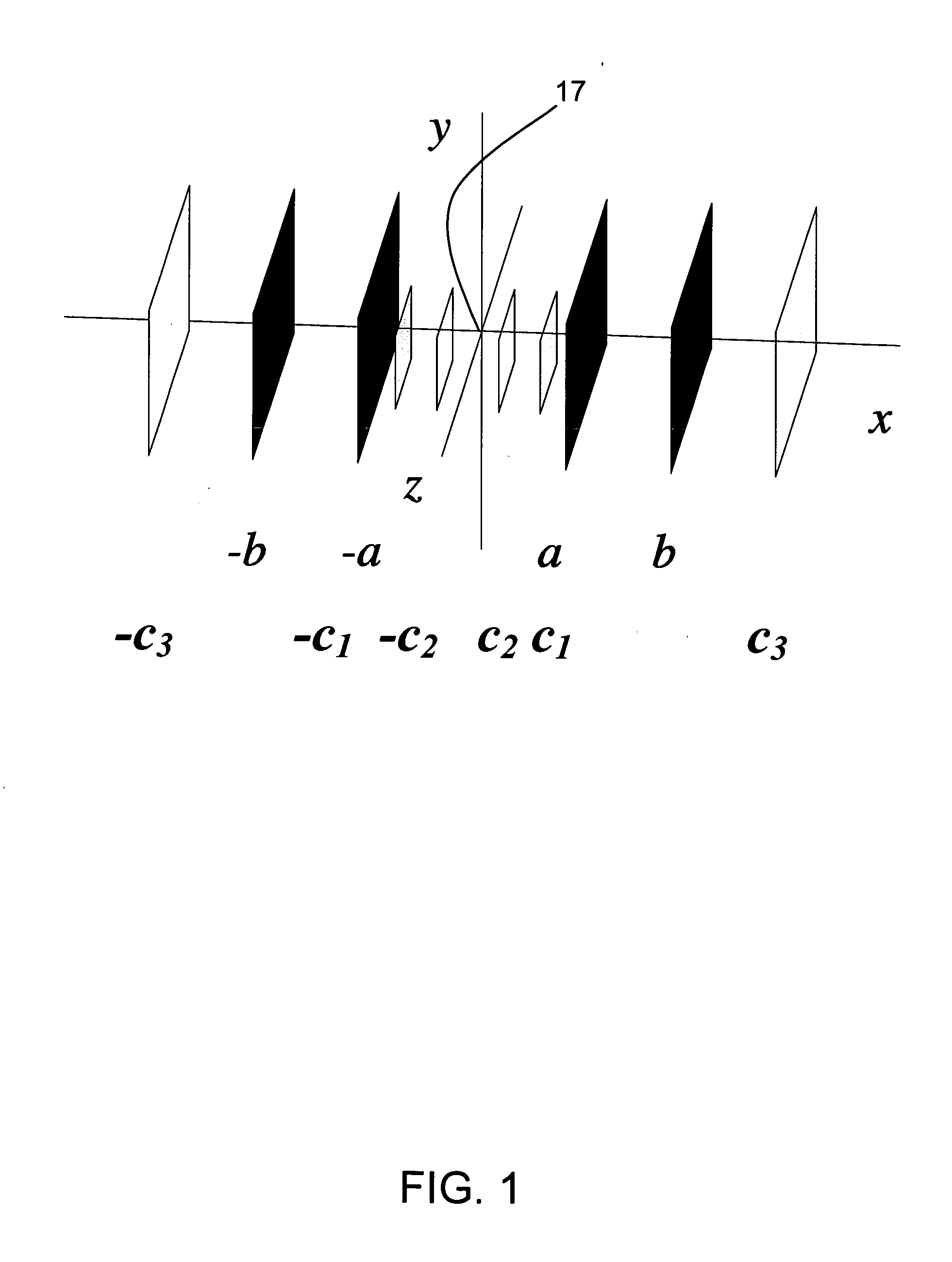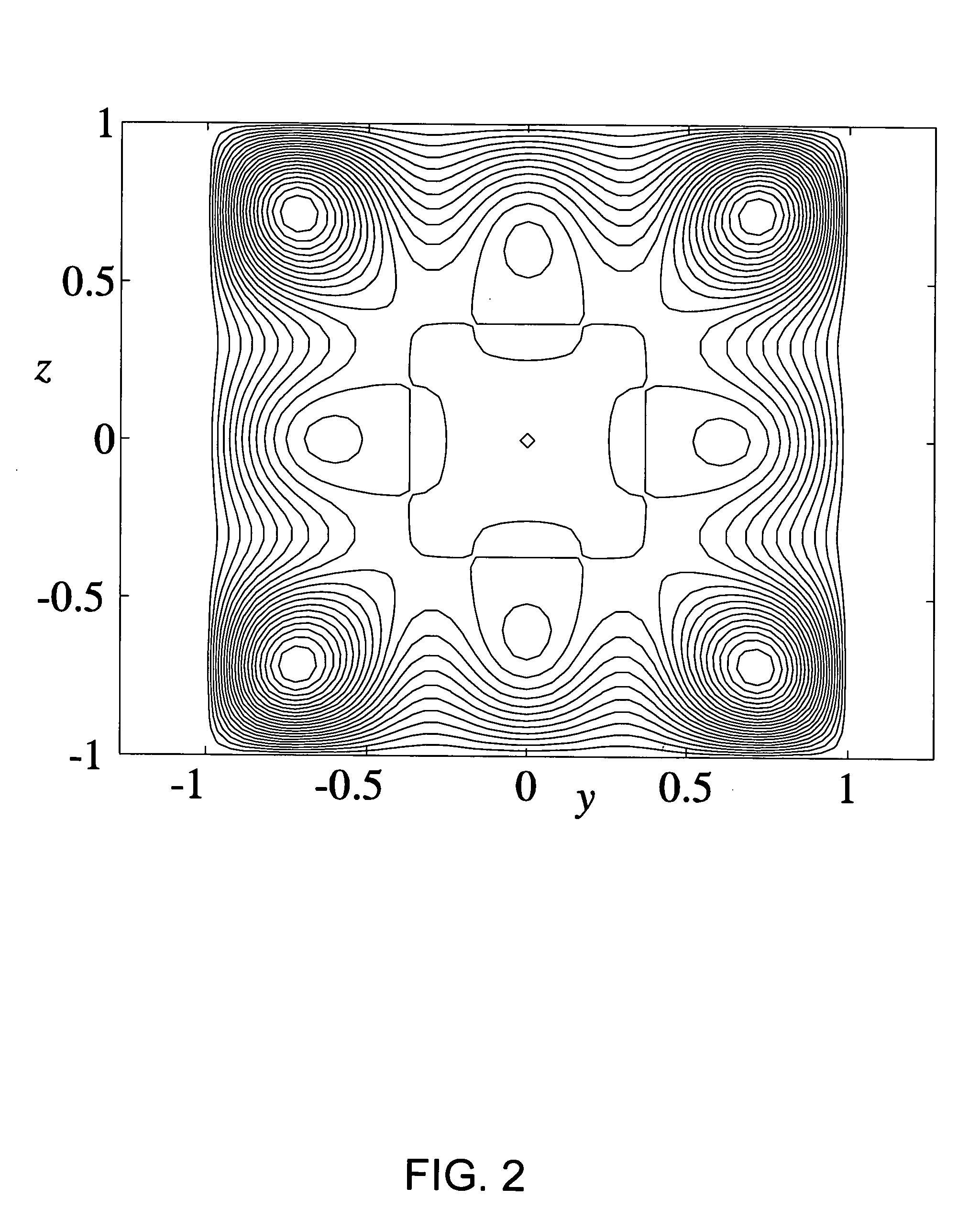Bi-planar coil assemblies for producing specified magnetic fields
- Summary
- Abstract
- Description
- Claims
- Application Information
AI Technical Summary
Benefits of technology
Problems solved by technology
Method used
Image
Examples
example 1
5.1 EXAMPLE 1
The T00 (Constant Field) Bi-Planar Coil
[0167] In this example, the method of the invention is used to design shielded and unshielded bi-planar coils that are intended to produce symmetrically located T00 fields within the primary bi-planar coil. For this coil, the target fields are simply constants, and so HX is simply a constant on each of the three pairs of target planes. We therefore set
HTX(c1; y, z)=Hmax
HTX(c2; y, z)=Hmax
HTX(c3; y, z)=0. (5.2)
Here, the constant transverse magnetic field within the primary coils has been assumed to take the value Hmax=1 amp / metre. The target field at x=±c3 is set to zero, reflecting the intended function of the shields. Since the T00 field is even in the x-coordinate (it is constant), the primary coil windings on the plane at x=−a are in phase with those on x=a, and the same is true for the shields on the planes x=±b. (This even target field requires the last term in equation (4.11) to take a plus sign).
[0168] To begin, the c...
example 2
5.2 EXAMPLE 2
The T11 Bi-Planar Coil
[0176] As a further illustration of the use of this invention, shielded bi-planar coils will be designed in this section, both for symmetric and asymmetrically located T11 fields. The transverse magnetic field component for this case has the general form HX (x, y, z)=C11x with C11 an arbitrary constant. It follows that the target fields on the three pairs of target planes used in this invention must be given by the equations HTX(c1;y,z)=Hmax(c1a)HTX(c2;y,z)=Hmax(c2a)HTX(c3;y,z)=0.(5.3)
Here, the constant Hmax is now the maximum magnetic field strength (in the x-component) on the plane x=a of the primary coil. Its value is set to 1 amp / metre here, for illustrative purposes. As this target field is now anti-symmetric in x, it follows that the coils on the opposing planes of the bi-planar coil (and also the shields) are counter-wound. This is the case discussed explicitly in Section 4.3.
[0177] The primary winding for a shielded T11 coil in...
example 3
5.3 EXAMPLE 3
The T21 Bi-Planar Coil
[0184] Another illustration of the use of this invention concerns the design of shielded bi-planar T21 coils. The technique has been used to design both symmetric and asymmetrically located fields, although only the latter case will be discussed here.
[0185] The transverse component for a symmetrically located T21 magnetic field has the general form HX (x, y, z)=3C21xz, where C21 is again an arbitrary constant. For a field that is asymmetrically positioned with respect to the origin, it therefore follows that the target fields take the forms HTX(c1;y,z)=Hmax(2c1a)Z2(q-p)HTX(c2;y,z)=Hmax(2c2a)Z2(q-p)HTX(c3;y,z)=0.(5.4)
[0186] Again, the constant Hmax is set to the value 1 amp / metre here, for illustrative purposes. This field (5.4) is also anti-symmetric in x, as for the case discussed in Section 5.2, and so the coils on the opposing planes of the bi-planar coil and shield are also counter-wound. The quantity Z2 in equations (5.4) is the co...
PUM
 Login to View More
Login to View More Abstract
Description
Claims
Application Information
 Login to View More
Login to View More - R&D
- Intellectual Property
- Life Sciences
- Materials
- Tech Scout
- Unparalleled Data Quality
- Higher Quality Content
- 60% Fewer Hallucinations
Browse by: Latest US Patents, China's latest patents, Technical Efficacy Thesaurus, Application Domain, Technology Topic, Popular Technical Reports.
© 2025 PatSnap. All rights reserved.Legal|Privacy policy|Modern Slavery Act Transparency Statement|Sitemap|About US| Contact US: help@patsnap.com



